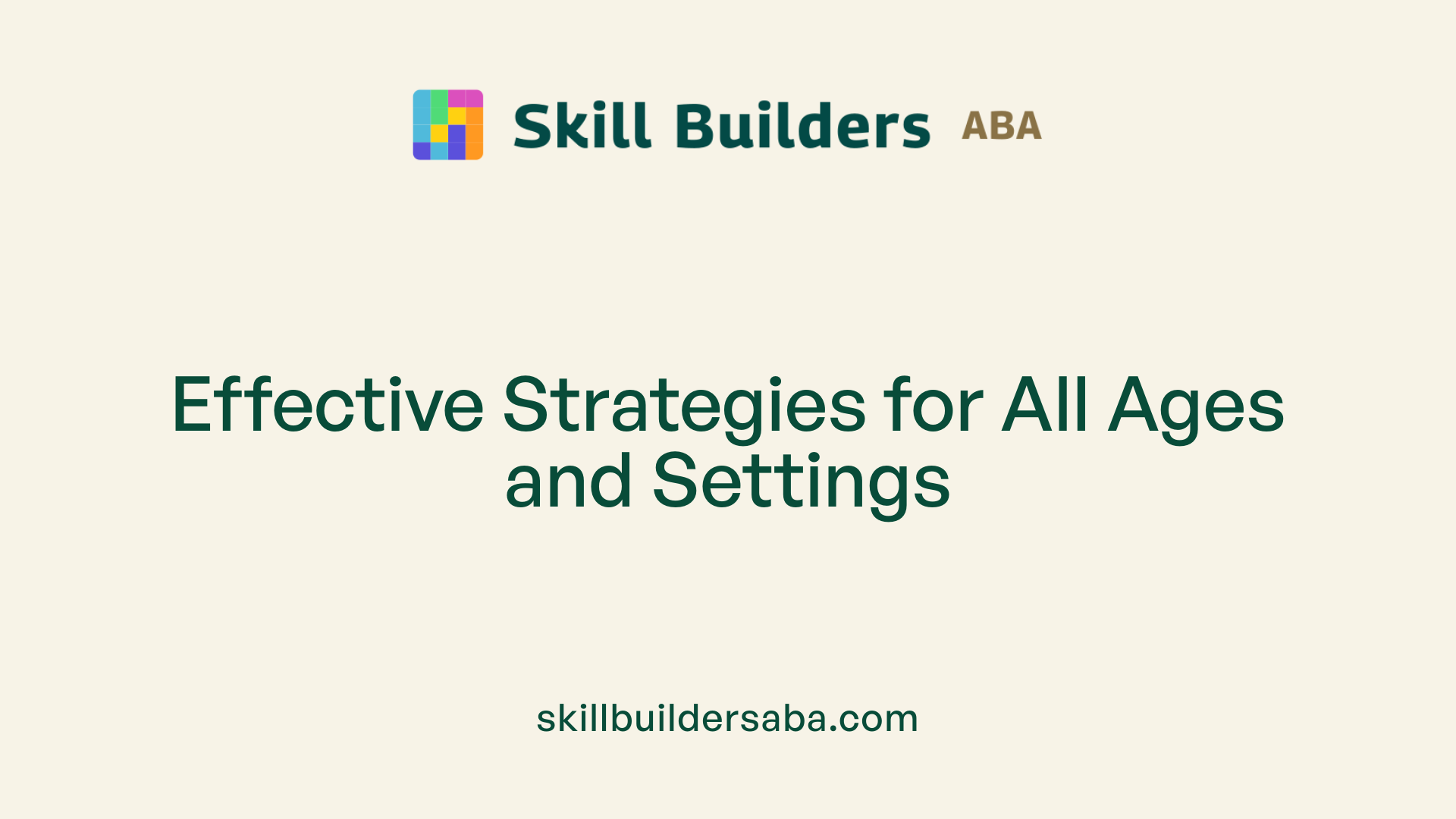
What is behavioral momentum and how to use it
Harnessing Behavior to Boost Engagement: Understanding and Applying Behavioral Momentum
Unlocking the Power of Behavioral Momentum in Education and Therapy
Behavioral momentum is a strategic approach used across educational, clinical, and home environments to increase compliance and foster positive behaviors. By leveraging the concept that success breeds success, caregivers and practitioners can create a seamless flow of behaviors that build motivation, resilience, and persistence in learners and clients. This article explores the core principles of behavioral momentum, how it is implemented in practice, and the broad applications that can enhance learning and behavior management.
Understanding the Foundations of Behavioral Momentum

What is the core principle behind behavioral momentum?
The core principle behind behavioral momentum is that establishing success with easy or high-probability tasks increases the likelihood of compliance with subsequent more difficult or low-probability tasks. This concept is rooted in the idea that past reinforcement and response history create a momentum that resists change and promotes persistence in behavior.
By leveraging high reinforcement rates and initial successes, individuals are more motivated and confident to engage in challenging activities. Behavioral momentum also draws on analogies from physics, suggesting that behaviors, like objects in motion, tend to continue once they are started, especially if reinforced consistently.
Ultimately, understanding and applying behavioral momentum can enhance motivation, compliance, and sustained engagement across various settings, including clinical and educational environments.
What is behavioral momentum and how is it used in practice?
Behavioral momentum is a technique used in Applied Behavior Analysis (ABA) that involves initiating a series of easy, high-probability (high-p) behaviors that the learner is likely to perform successfully, before requesting a more challenging or low-probability (low-p) behavior.
This approach builds interest and positive momentum, making it more likely that the learner will comply with difficult tasks later on. It is supported by research showing increased compliance when high-p behaviors precede low-p requests (Davis et al., 1992), and is often perceived as enjoyable and reinforcing for both the learner and practitioner (Mace et al., 1988).
In practice, practitioners quickly present 3-5 engaging, easy demands, reinforce each response, and then request a low-p behavior within a few seconds. This sequence helps facilitate smooth transitions, manage escape-maintained behaviors, and promote skill acquisition.
Behavioral momentum can be applied across various settings and age groups. It uses reinforcement and positive interactions to boost motivation, confidence, and overall compliance, making it a versatile tool in behavioral interventions.
Practical Application and Implementation Strategies

Steps to implement behavioral momentum
Implementing behavioral momentum involves a structured process that starts with identifying suitable requests. The core idea is to first select high-probability (high-p) behaviors or demands that the individual is highly likely to perform. These are easy, enjoyable, or familiar tasks, such as clapping, touching their nose, or giving a high five.
Next, present several of these high-p requests in quick succession, known as a high-p sequence. Reinforce each response immediately with praise, tokens, or preferred activities to create a sense of success and build momentum.
Once the learner reliably responds to the easy tasks, introduce a low-probability (low-p) request—something more challenging or less preferred—hoping to increase the likelihood of compliance based on the momentum gained.
Over time, as responses to low-p tasks become more consistent, the high-p requests can be gradually faded while maintaining reinforcement strategies.
Selecting appropriate high-p and low-p requests
Choosing the right requests is crucial for the success of behavioral momentum. High-p requests should be tasks the individual generally enjoys or finds easy, such as simple motor responses or greetings.
Low-p requests are more demanding, such as completing a difficult puzzle, copying sentences, or transitioning between activities.
Teachers and therapists often observe which requests the individual responds to readily and select those as high-p behaviors.
The importance of rapid, seamless presentation
A central aspect of this strategy is the quick and smooth presentation of requests. Demands should be given in rapid succession, not asking for opinions or giving lengthy instructions. Clear, concise language should be used, and items should be presented when the learner is attentive.
Maintaining a seamless flow helps to sustain the engaging environment and prevents the learner from losing momentum or becoming distracted. The timing should be prompt to reinforce an efficient pattern of compliance.
Reinforcement strategies for success
Reinforcement is vital for strengthening responses during behavioral momentum sessions. Praises, stickers, tokens, or preferred activities can be used immediately after each successful response.
Initially, reinforcement should be consistent to establish a pattern of success, then gradually faded as the individual gains confidence.
Positive reinforcement helps to sustain motivation and encourages future compliance.
Fading high-p requests over time
As the individual becomes more adept at complying with low-p requests, the high-p demands can be gradually reduced. Fading involves decreasing the number of easy, reinforced requests and increasing the complexity of tasks.
The goal is to make the low-p demands more achievable independently, thus promoting generalization and independence.
Applying these strategies systematically ensures a smooth transition from easy to challenging behaviors, fostering sustained engagement and learning.
| Step | Description | Tips |
|---|---|---|
| 1 | Identify high-p and low-p requests | Use observations and preferred activities |
| 2 | Present high-p requests in rapid succession | Keep instructions short and clear |
| 3 | Reinforce each response immediately | Use preferred reinforcers |
| 4 | Introduce low-p request after momentum build | Monitor responsiveness |
| 5 | Gradually fade high-p requests | Increase difficulty gradually |
| 6 | Reinforce and monitor progress | Adjust sequences as needed |
Examples in practice
- During classroom transitions, a teacher might ask a student to do several quick, easy tasks like clapping, touching their nose, or saying hello before asking them to pack up their belongings, a more difficult task.
- In therapy, a child might be asked to perform simple activities like pointing to body parts, then transition to more complex tasks like completing a puzzle, guided by the momentum of previous responses.
Research and supporting evidence
Research published in journals such as the Journal of Behavioral Education and the Journal of Applied Behavior Analysis confirms the efficacy of behavioral momentum in increasing compliance and reducing challenging behaviors.
Studies have shown that systematically using high-p requests before low-p requests enhances motivation, engagement, and skill acquisition across various settings, from classrooms to clinical interventions for autism.
By applying this structured approach, practitioners can foster positive behaviors and promote sustainable learning habits.
In summary, effective implementation of behavioral momentum requires selecting appropriate requests, maintaining a rapid and seamless presentation, reinforcing responses consistently, and gradually fading high-p demands. This method enhances motivation and compliance, making it a valuable strategy in educational, therapeutic, and daily routines.
The Role of Reinforcement in Building Momentum
What types of reinforcement are used?
In behavioral momentum, various reinforcement types can be employed to strengthen responses. Commonly, verbal praise is used, such as saying, "Good job!" or "Nice work!" to recognize successful efforts immediately. Tangible rewards like stickers, tokens, or small treats can also be effective, providing a concrete incentive for compliance. Additionally, access to preferred activities or items, occasional breaks, or digital rewards like tokens or digital points serve to motivate the learner. Reinforcers are most effective when they are immediately delivered following a successful behavior, which helps to strengthen the connection between the response and the reinforcement.
How important is the timing and consistency of reinforcement?
Timing is crucial in the effectiveness of behavioral momentum. Reinforcement should be delivered immediately after the desired behavior to maximize its impact. Consistency is equally important; reinforcing every correct response helps establish a clear association and builds a pattern of success. When reinforcement is inconsistent, the learner may become confused or less motivated. During the initial stages of implementing behavioral momentum, consistent reinforcement ensures that the learner recognizes the link between effort and reward, reinforcing confidence and increasing the likelihood of compliance with subsequent, more challenging tasks.
What is the impact on learner motivation?
Reinforcement significantly boosts learner motivation by creating positive associations with the task. When learners experience frequent success and receive positive feedback or tangible rewards, they develop greater confidence and enthusiasm to engage with tasks. This heightened motivation makes it easier to introduce difficult or low-probability requests, as the momentum built from easy, reinforced requests carries over. Over time, consistent reinforcement during these sequences helps foster independence, resilience, and a positive attitude towards learning. This strategy not only increases immediate compliance but also contributes to long-term engagement and skill development.
| Reinforcement Type | Examples | Effectiveness | Best Use Cases |
|---|---|---|---|
| Verbal praise | "Great job!" | Immediate and encouraging | During sessions, especially initial phases |
| Tangible rewards | Stickers, tokens | Highly motivating, especially with children | For increasing compliance across behaviors |
| Access to preferred items | Breaks, toys | Reinforces persistence | When a learner resists after multiple requests |
| Social reinforcement | Smiles, high-fives | Builds rapport and motivation | Consistent across settings |
Implementing diverse reinforcement strategies, maintaining appropriate timing, and ensuring consistency are foundational to the success of behavioral momentum. When used effectively, they foster a resilient learning environment where learners are motivated to engage, succeed, and progress.
Behavioral Momentum in Diverse Settings and Populations

What is behavioral momentum and how is it used in practice?
Behavioral momentum is an instructional and behavioral strategy used within Applied Behavior Analysis (ABA) to increase compliance and motivation. It involves starting with a series of easy, high-probability (high-p) behaviors or demands that a learner is likely to perform successfully. These tasks are presented quickly and reinforced immediately upon completion. After establishing a pattern of success and momentum, a more challenging or low-probability (low-p) request is made.
This technique leverages the idea that success in easy tasks creates a psychological and behavioral momentum, making it more likely that the individual will comply with difficult requests. Research, such as the study by Davis et al. (1992), confirms that this approach significantly boosts compliance. It is especially useful in managing escape-maintained behaviors, easing transitions, and promoting skill development.
In practice, practitioners select engaging, simple demands—like writing their name or underlining a word—present 3-5 of these requests in rapid succession, reinforcing each response. Then, they swiftly introduce the more challenging task, often within a few seconds. Reinforcers like praise, tokens, or preferred items further strengthen responses. This method is effective for learners of all ages and across settings, fostering confidence and creating a positive, motivating learning environment.
Understanding the Theory: Behavioral Momentum as a Resistance to Change
What is behavioral momentum and how is it used in practice?
Behavioral momentum is a technique within Applied Behavior Analysis (ABA) that helps increase compliance and reduce resistance to tasks. The core idea is to start with simple, enjoyable activities that the individual is highly likely to perform successfully—these are called high-probability (high-p) behaviors.
Practitioners quickly present several of these easy tasks in succession, reinforcing each successful response with praise, tokens, or other rewards. After establishing a pattern of compliance and success, they then introduce a more difficult or less preferred task—known as the low-probability (low-p) behavior—making it more likely that the person will attempt it.
This method builds momentary momentum, much like a snowball gaining size and speed as it rolls downhill. As a result, the individual feels confident and motivated to tackle tougher challenges. This approach is effective across various settings such as classrooms, therapy sessions, or home environments, and with individuals of different ages, including children with autism or behavioral challenges.
Research supports its effectiveness. For example, Davis et al. (1992) found that when individuals were first engaged in high-p behaviors, their likelihood of complying with subsequent low-p tasks increased significantly. Likewise, the strategy is perceived as enjoyable and reinforcing, making it a practical tool for educators and therapists.
In practical application, providers typically select 3-5 simple, engaging requests like writing their name, pointing to objects, or completing a preferred activity. They reinforce each action immediately and within a few seconds, then proceed to the more demanding task. This quick and seamless flow helps maintain behavioral momentum, encourages persistence, and supports skill development.
By fostering a positive experience around initial tasks, behavioral momentum can aid in transitions, reduce escape-maintained behaviors, and promote overall motivation, making difficult tasks feel less daunting and more manageable.
Maximizing Engagement and Behavior Change
By understanding and intentionally applying the principles of behavioral momentum, educators, therapists, and caregivers can significantly enhance compliance, reduce problem behaviors, and promote lasting learning. This strategy’s versatility across different environments and populations makes it a vital component of effective behavior management and education. Consistent use, combined with reinforcement and careful planning, ensures that behavioral momentum can create a positive, engaging, and resilient behavioral landscape for learners of all ages.
References
- Behavior Momentum - Nebraska Autism Spectrum Disorders Network
- Using Behavioral Momentum as an Antecedent Strategy - Master ABA
- BEHAVIORAL MOMENTUM THEORY: EQUATIONS AND ...
- Behavioral Momentum: Building Compliance and Persistence ...
- What Is Behavioral Momentum in ABA Therapy?
- High-Probability Request Sequences & Behavioral Momentum
- Behavioral Momentum Intervention (BMI) - AFIRM
- Behavioral Momentum | Texas SPED Support
- Success with Behavioral Momentum in ABA for Autism | Childwise
Reach Out Today
Learn more about how we can support your child’s growth and development. Contact us to discuss our services and availability in your area.
.svg)